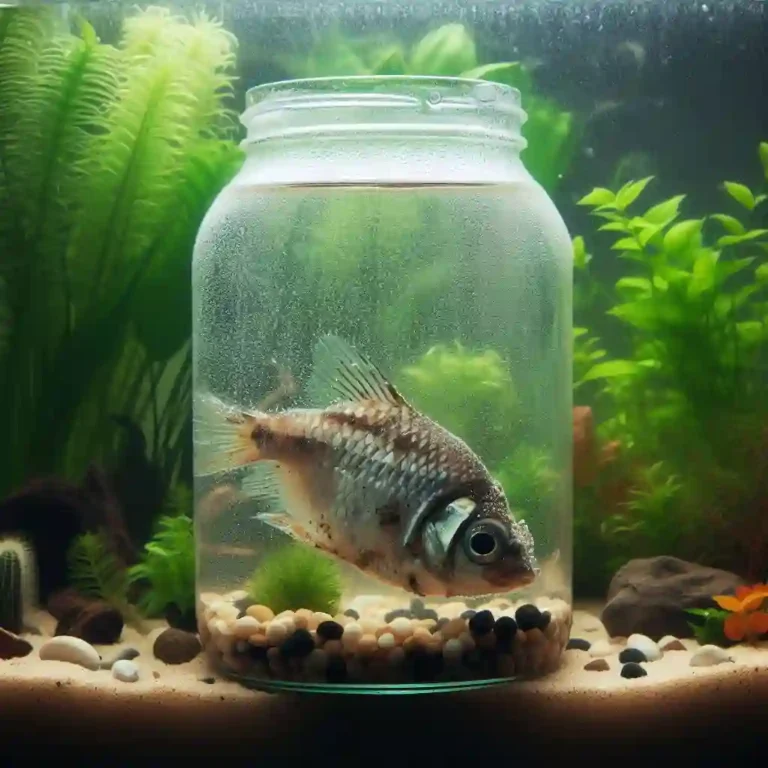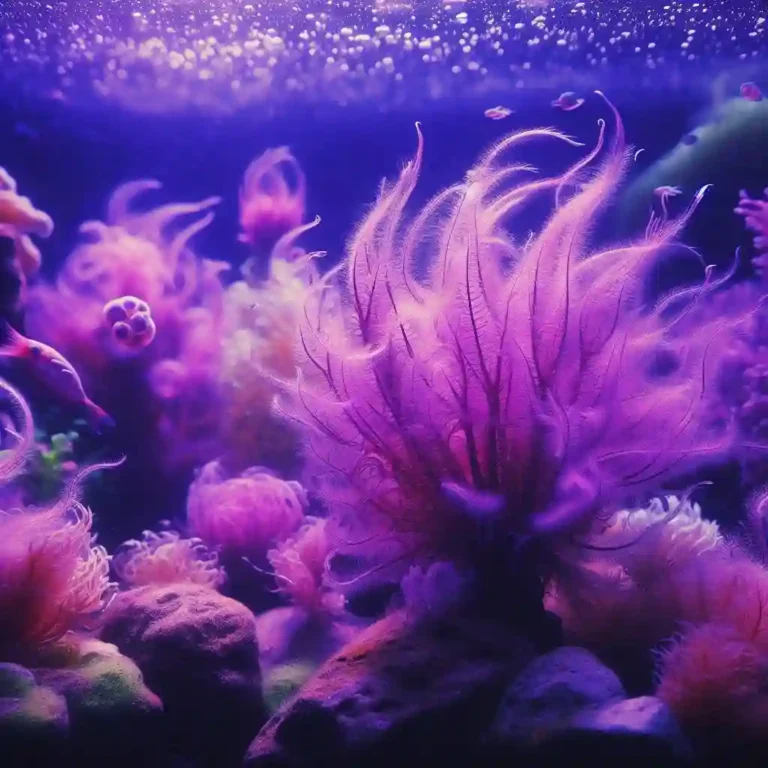Pregnant Kuhli Loach: A Guide to Breeding and Care
Pregnant Kuhli Loach: When it comes to the fascinating world of aquarium fish, few species capture the imagination quite like the Kuhli Loach.
But what happens when a Kuhli Loach becomes… pregnant? While it may seem counterintuitive, the idea of a fish giving birth is not as far-fetched as it may seem.
In this article, we’ll delve into the fascinating world of Kuhli Loach reproduction, exploring the biology and behavior of these remarkable creatures.
Pregnant Kuhli Loach: A Quick Guide

Pregnancy Signs
- Swollen belly: The loach’s belly will become swollen as the eggs develop.
- Behavioral changes: The loach may become more active and restless as the eggs near hatching.
Care and Feeding
- Nutritious diet: Feed your loach a nutritious diet rich in protein and omega-3 fatty acids.
- Water quality: Maintain optimal water quality by performing regular water changes and monitoring water parameters.
- Temperature: Keep the water temperature between 75-82°F (24-28°C) to support fetal development.
Hatching and Fry Care
- Egg hatching: The eggs will hatch within 24-48 hours after spawning.
- Fry care: Feed the fry infusoria or other small foods, and maintain optimal water quality.
- Fry growth: Monitor the fry’s growth and adjust their diet and environment as needed.
Tips and Reminders
- Monitor water quality: Regularly test and adjust water parameters to prevent disease and stress.
- Provide a varied diet: Offer a mix of live, frozen, and commercial foods to ensure a balanced diet.
- Monitor growth and health: Regularly inspect the fry for signs of disease, stress, or malnutrition, and make adjustments as necessary.
Understanding Kuhli Loach Reproduction: A Primer

Sexing Kuhli Loaches
Determining the sex of Kuhli loaches can be challenging, but there are some key differences to look out for:
- Males: Typically smaller than females, with a more slender body shape and a longer, more pointed snout.
- Females: Larger than males, with a more rounded belly and a shorter, more rounded snout.
The Reproductive Cycle
Kuhli loaches have a unique reproductive cycle that involves a process called ” fractional spawning”. This means that females release eggs in batches, which are then fertilized by the male. The entire spawning process can take several days to complete.
Spawning Triggers
Kuhli loaches are triggered to spawn by changes in their environment, such as:
- Water changes: Sudden changes in water temperature or chemistry can stimulate spawning.
- Food availability: Abundant food can trigger spawning, as it signals to the loaches that it’s a good time to reproduce.
- Social cues: The presence of other loaches, particularly males, can stimulate spawning.
Breeding Age and Maturity
Kuhli loaches typically reach breeding maturity at around 6-12 months of age, although this can vary depending on factors such as diet, water quality, and genetics.
Recognizing the Signs of Pregnancy in Kuhli Loaches
Visual Cues
Pregnant Kuhli loaches often exhibit the following visual characteristics:
- Swollen belly: A pregnant loach’s abdomen will become noticeably rounded and swollen as the eggs develop.
- Darkening of the belly: The belly area may darken in color, becoming more grayish or brownish as the eggs mature.
- Increased size: Pregnant loaches may appear larger than usual, particularly in the abdominal area.
Behavioral Changes
Pregnant Kuhli loaches may also exhibit behavioral changes, including:
- Increased hiding: Pregnant loaches may become more reclusive, hiding more frequently or for longer periods.
- Reduced activity: Pregnant loaches may be less active, swimming less or resting more frequently.
- Changes in appetite: Pregnant loaches may exhibit changes in appetite, either eating more or less than usual.
Other Signs
In addition to visual and behavioral cues, there are other signs that may indicate pregnancy:
- Nesting behavior: Pregnant loaches may begin to prepare a nesting site, such as a cave or a depression in the substrate.
- Changes in social behavior: Pregnant loaches may become more aggressive or territorial, defending their territory from other loaches.
False Pregnancies
It’s essential to note that some Kuhli loaches may exhibit false pregnancies, where they display pregnancy-like symptoms but are not actually carrying eggs. This can be caused by various factors, including hormonal imbalances or certain diseases.
Confirmation of Pregnancy
To confirm pregnancy, it’s recommended to observe the loach’s behavior and physical characteristics over a period of time. If you suspect a loach is pregnant, it’s essential to provide optimal care and nutrition to ensure the health of both the mother and the developing young.
Optimizing Breeding Conditions: Water Quality and Tank Setup

Water Quality Parameters
To encourage breeding, maintain the following water quality parameters:
- pH: 6.5-7.5 (slightly acidic to neutral)
- Temperature: 75-82°F (24-28°C), with a temperature gradient to allow loaches to choose their preferred temperature
- Water Hardness: 5-10 dGH (moderate water hardness)
- Water Movement: Moderate to strong water movement (10-20 gallons per hour) to simulate a natural stream environment
- Water Changes: Regular water changes (10-20% every week) to maintain water quality and prevent buildup of toxins
- Ammonia and Nitrite: 0 ppm (undetectable levels)
- Nitrate: < 20 ppm (low to moderate levels)
Tank Setup and Decorations
A well-planned tank setup can help stimulate breeding and provide a comfortable environment for your loaches. Consider the following:
- Tank Size: A minimum of 20 gallons for a breeding pair, with a secure lid to prevent jumping
- Substrate: A soft, sandy substrate (e.g., pool filter sand) to prevent damage to the loaches’ bodies
- Decorations: Provide plenty of hiding places, such as plants, rocks, and driftwood, to reduce stress and provide shelter
- Water Level: Maintain a water level of 12-18 inches to allow for comfortable swimming and hiding
- Caves and Tunnels: Include caves and tunnels to provide additional hiding places and stimulate breeding behavior
Spawning Triggers
To stimulate spawning, you can try the following:
- Water Changes: Perform a large water change (50-75%) to simulate a natural flood event
- Temperature Fluctuations: Gradually increase the temperature by 1-2°F (0.5-1°C) over a few days to simulate a natural temperature fluctuation
- Food Availability: Provide an abundance of high-quality food to simulate a natural abundance of food
- Tank Maintenance: Perform regular tank maintenance, such as cleaning and replacing filter media, to maintain optimal water quality
Breeding Tank Layout
Consider the following layout for a breeding tank:
- Spawning Area: Create a separate area with a flat, open space (e.g., a spawning cone or a flat rock) for the loaches to spawn
- Hiding Places: Provide plenty of hiding places, such as plants or rocks, to reduce stress and provide shelter
- Water Flow: Create a moderate to strong water flow to simulate a natural stream environment
- Visual Barriers: Include visual barriers, such as plants or rocks, to provide a sense of security and reduce stress
Nutrition and Diet for Pregnant Kuhli Loaches: What to Feed
Key Nutrients
Pregnant Kuhli loaches require a diet rich in the following key nutrients:
- Protein: High-quality protein sources, such as brine shrimp, bloodworms, and earthworms, to support egg development and fetal growth
- Fatty Acids: Omega-3 fatty acids, found in foods like spirulina and krill, to support fetal development and egg quality
- Vitamins and Minerals: A balanced mix of vitamins and minerals, such as vitamin E, calcium, and phosphorus, to support overall health and egg production
Food Options
Some excellent food options for pregnant Kuhli loaches include:
- Live or Frozen Brine Shrimp: Rich in protein and omega-3 fatty acids, brine shrimp are an excellent food source for pregnant loaches
- Bloodworms: High in protein and iron, bloodworms are a nutritious food option for pregnant loaches
- Earthworms: Rich in protein and omega-3 fatty acids, earthworms are a great food source for pregnant loaches
- Spirulina: A nutrient-rich algae that provides a balanced mix of vitamins, minerals, and omega-3 fatty acids
- Krill: A high-protein food source that is rich in omega-3 fatty acids and other essential nutrients
Feeding Schedule
To support optimal nutrition and health, feed your pregnant Kuhli loaches:
- 2-3 times a day: Offer small, frequent meals to ensure that your loaches are getting the nutrients they need
- Variety is key: Rotate through different food sources to ensure that your loaches are getting a balanced diet
- Avoid overfeeding: Monitor your loaches’ appetites and adjust feeding amounts accordingly to prevent overfeeding and water quality issues
Supplements
Consider adding the following supplements to your pregnant Kuhli loach’s diet:
- Vitamin supplements: Add a vitamin supplement to the food to ensure that your loaches are getting all the necessary vitamins and minerals
- Omega-3 supplements: Add an omega-3 supplement to support fetal development and egg quality
Creating a Safe and Healthy Environment for Fertilization
Spawning Site
Provide a suitable spawning site for your Kuhli loaches by:
- Creating a spawning cone or cave: Use a spawning cone or create a cave using rocks or plants to provide a safe and secluded area for spawning
- Adding plants: Add plants with broad leaves or dense foliage to provide shelter and protection for the spawning loaches
- Maintaining water flow: Ensure a moderate to strong water flow to simulate a natural stream environment and encourage spawning
Optimal Water Quality
Maintain optimal water quality by:
- Monitoring water parameters: Regularly test the water for ammonia, nitrite, and nitrate levels, and make adjustments as necessary
- Performing regular water changes: Replace 10-20% of the tank water weekly to maintain optimal water quality
- Maintaining a stable temperature: Keep the water temperature between 75-82°F (24-28°C) to simulate a natural environment
Minimizing Stress and Disturbance
Minimize stress and disturbance by:
- Reducing tank traffic: Avoid sudden movements or loud noises near the tank to prevent stressing the loaches
- Maintaining a peaceful environment: Avoid keeping aggressive or fin-nipping tankmates with your Kuhli loaches
- Providing plenty of hiding places: Ensure that your loaches have plenty of places to hide and feel secure
Fertilization Triggers
To stimulate fertilization, you can try the following:
- Simulating a rainstorm: Create a sudden change in water flow or temperature to simulate a natural rainstorm
- Adding a water change: Perform a large water change (50-75%) to simulate a natural flood event
- Introducing a new tankmate: Add a new Kuhli loach to the tank to stimulate social interaction and encourage spawning
Caring for Pregnant Kuhli Loaches: Monitoring Health and Well-being
Monitoring Health
Regularly monitor your pregnant Kuhli loach’s health by:
- Observing behavior: Watch for signs of stress, such as rapid breathing, erratic swimming, or hiding
- Checking for physical changes: Monitor the loach’s body shape, color, and fins for any signs of disease or injury
- Monitoring water quality: Regularly test the water for ammonia, nitrite, and nitrate levels, and make adjustments as necessary
Maintaining Optimal Water Quality
Maintain optimal water quality by:
- Performing regular water changes: Replace 10-20% of the tank water weekly to maintain optimal water quality
- Monitoring water parameters: Regularly test the water for ammonia, nitrite, and nitrate levels, and make adjustments as necessary
- Maintaining a stable temperature: Keep the water temperature between 75-82°F (24-28°C) to simulate a natural environment
Nutrition and Diet
Provide a nutritious diet to support the loach’s health and the developing eggs by:
- Offering a varied diet: Provide a mix of live, frozen, and dry foods to ensure a balanced diet
- Feeding frequently: Feed your loach 2-3 times a day, only as much as they can consume within a few minutes
- Avoiding overfeeding: Monitor the loach’s appetite and adjust feeding amounts accordingly to prevent overfeeding and water quality issues
Common Health Issues
Be aware of common health issues that can affect pregnant Kuhli loaches, such as:
- Fungal infections: Caused by poor water quality or injury, fungal infections can be treated with antifungal medications
- Bacterial infections: Caused by poor water quality or injury, bacterial infections can be treated with antibiotics
- Parasites: Caused by poor water quality or contaminated food, parasites can be treated with anti-parasitic medications
The Birth Process: What to Expect and How to Assist
Signs of Impending Birth
Before birth, your pregnant Kuhli loach may exhibit the following signs:
- Restlessness: The loach may become more active and restless, swimming erratically around the tank
- Nesting behavior: The loach may start preparing a nesting site, such as digging a hole in the substrate or arranging plants
- Changes in color: The loach’s color may darken or lighten, indicating the onset of labor
The Birth Process
The birth process typically lasts several hours, during which the loach will release its eggs into the water column. You may observe the following:
- Egg release: The loach will release a cloud of eggs into the water, which will then fertilize
- Fertilization: The male loach will fertilize the eggs, resulting in a cloudy or milky appearance in the water
- Egg development: The eggs will develop and hatch within 24-48 hours, depending on water temperature and quality
Assisting the Birth Process
To assist your loaches during the birth process, follow these tips:
- Maintain optimal water quality: Ensure the water is clean, clear, and well-oxygenated to support the health of the loaches and the developing eggs
- Provide a safe environment: Ensure the tank is free from predators and aggressive tankmates, and provide plenty of hiding places for the loaches
- Monitor water temperature: Maintain a stable water temperature between 75-82°F (24-28°C) to support the development of the eggs
- Avoid disturbing the loaches: Minimize disturbance and stress to the loaches during the birth process, as this can cause them to abandon their eggs or become stressed
Post-Birth Care
After the birth process, it’s essential to provide optimal care for the newborn fry. This includes:
- Separating the fry: Separate the fry from the adults to prevent predation and ensure their safety
- Providing a nutritious diet: Offer the fry a nutritious diet of infusoria, brine shrimp, or other small foods
- Maintaining optimal water quality: Ensure the water is clean, clear, and well-oxygenated to support the health and development of the fry
Raising Kuhli Loach Fry: Tips for Successful Larval Care
Initial Care (0-2 weeks)
During the first two weeks, the fry are vulnerable and require specialized care:
- Feed infusoria: Provide infusoria, a type of protozoa, as the primary food source for the first week
- Maintain water quality: Perform daily water changes (10-20%) to maintain optimal water quality and prevent disease
- Monitor water temperature: Keep the water temperature between 75-82°F (24-28°C) to support larval development
Growth and Development (2-6 weeks)
As the fry grow, their diet and environment require adjustments:
- Introduce brine shrimp: Start feeding brine shrimp ( Artemia salina) as a supplement to infusoria
- Increase water changes: Gradually increase water changes to 20-30% daily to maintain optimal water quality
- Monitor water parameters: Regularly test the water for ammonia, nitrite, and nitrate levels, and make adjustments as necessary
Weaning and Growth (6 weeks+)
As the fry mature, they require a more varied diet and a larger environment:
- Introduce commercial foods: Gradually introduce commercial foods, such as powdered or flake foods, to supplement their diet
- Upgrade to a larger tank: Transfer the fry to a larger tank (at least 10 gallons) with plenty of hiding places and open swimming space
- Monitor growth and health: Regularly monitor the fry’s growth, color, and overall health, making adjustments to their diet and environment as needed
Tips for Successful Larval Care
To ensure the survival and healthy development of your Kuhli loach fry, remember:
- Maintain optimal water quality: Regularly test and adjust water parameters to prevent disease and stress
- Provide a varied diet: Offer a mix of live, frozen, and commercial foods to ensure a balanced diet
- Monitor growth and health: Regularly inspect the fry for signs of disease, stress, or malnutrition, and make adjustments as necessary
- Be patient: Raising Kuhli loach fry requires time, patience, and attention to detail
FAQs

Hello, I’m Aria Cooper, the heart and soul behind Swimmy Buddies. As a devoted fish aficionado, I share my aquatic adventures and expertise to inspire your own underwater explorations. 🐠🌊







